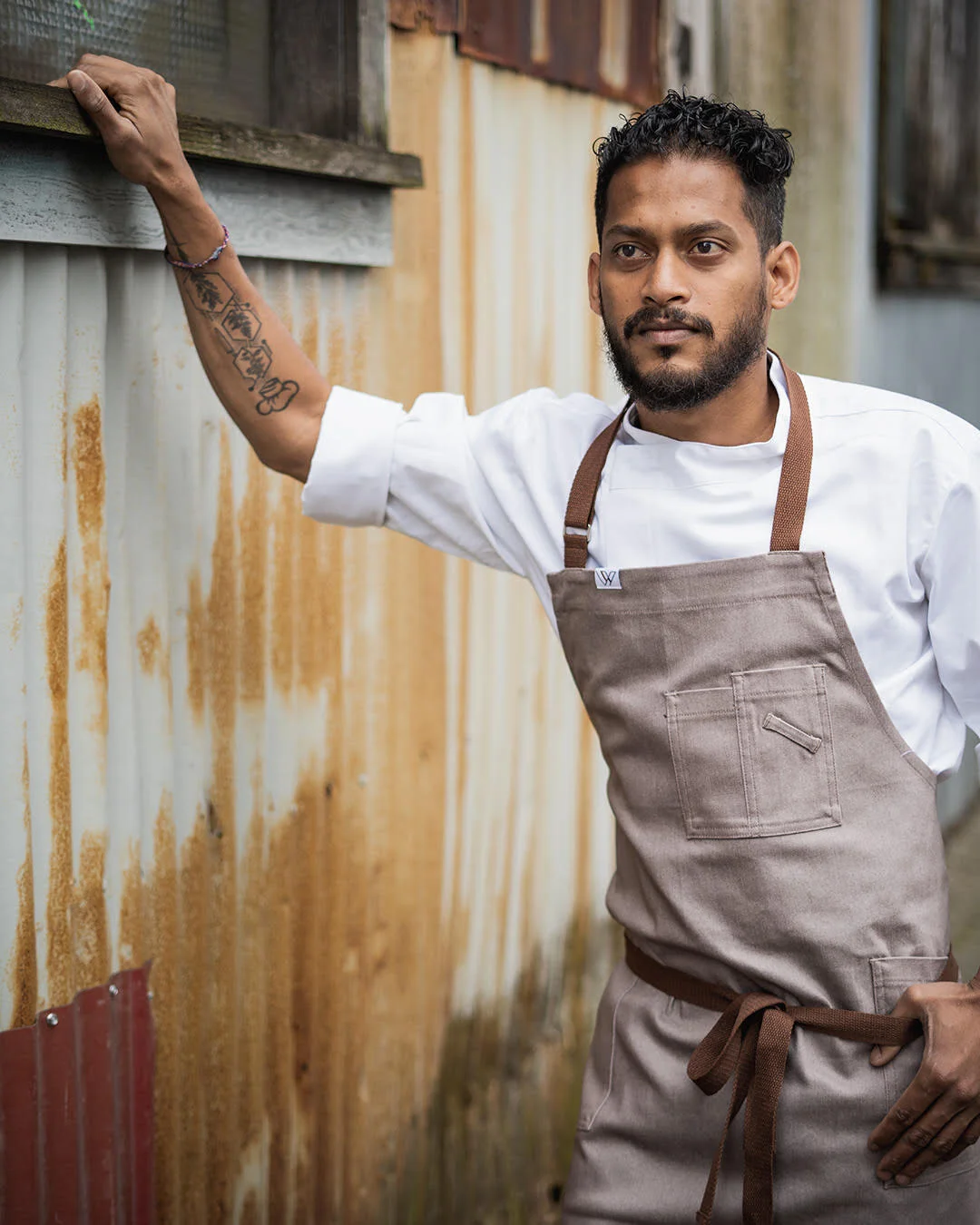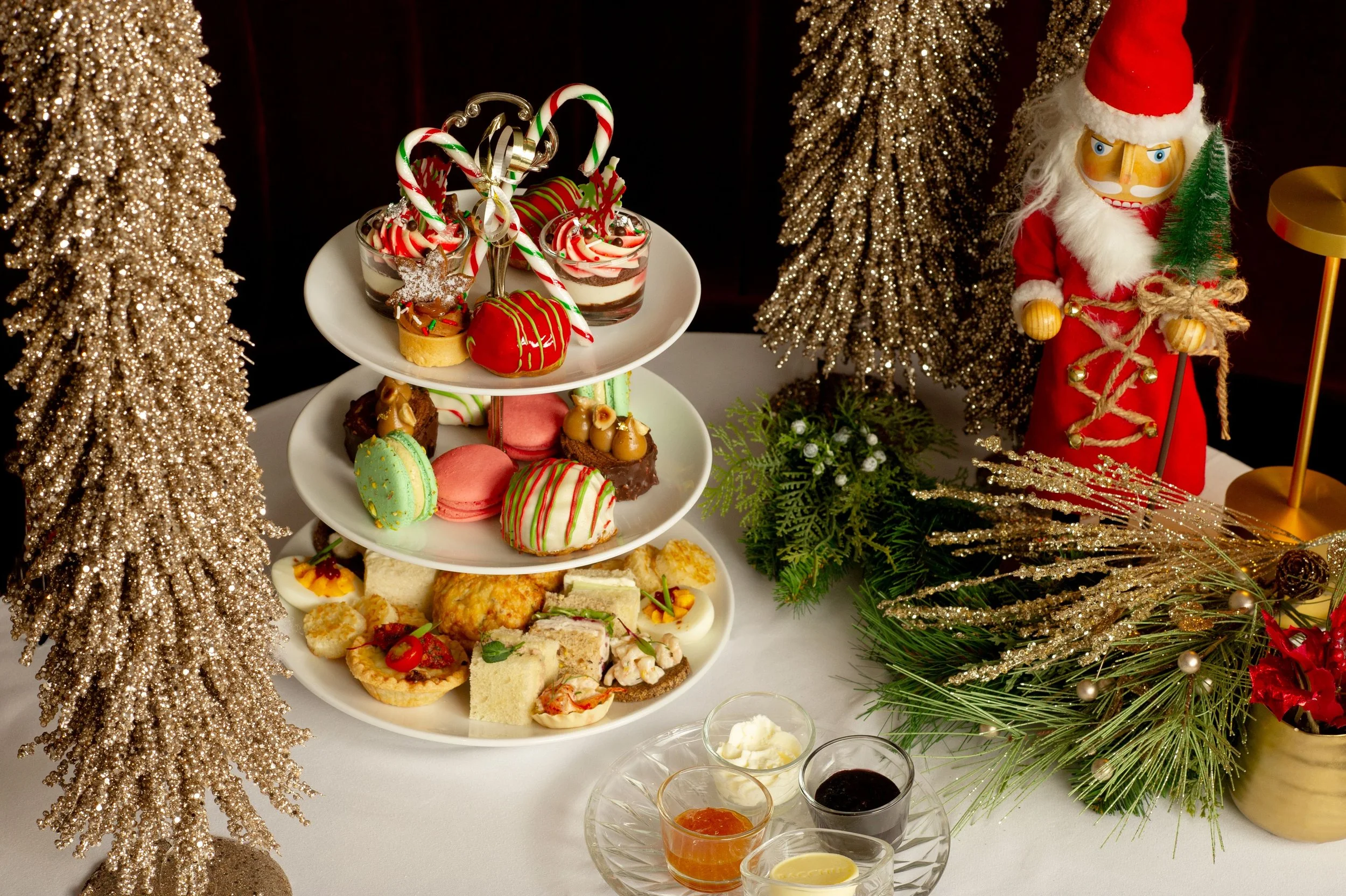Chef Tushar Tondvalkar broadens Vancouver’s understanding of Indian cuisine
With the Indian Pantry, the Mumbai native introduces people to India’s vast range of flavours and culinary traditions
Vancouver chef Tushar Tondvalkar noticed a gap in Indian herbs and spices available at most local grocery stores.
BORN AND RAISED in Mumbai, Tushar Tondvalkar spent his summers in Malvan, a town on the Konkan Coast in the southernmost part of Maharashtra state. The Vancouver chef remembers going off in the evenings with his family to pick coconuts, climbing to the top of the tall trees, then venturing to the seashore to harvest clams. That night’s meal would be clams soaked in Malvani gravy.
Every family has their own way of preparing the sauce; Tondvalkar’s grandmother’s version has of a base of coconut and caramelized onions. She passed her recipe down to his mother, who passed it on him. Now, Aai’s Malvani Gravy is a staple of the Indian Pantry. Based out of the Coho Commissary in East Vancouver, Tondvalkar’s recently launched company makes small-batch simmering sauces, freshly roasted spices, and condiments that are true to the food he grew up with.
“Mumbai is located in Maharashtra and the state language spoken there is Marathi,” Tondvalkar tells Stir. “Folks in Malvan speak a mix of Konkani, Malvani, and Marathi. Aai in Marathi means mother. It’s the equivalent to saying ‘mom’ or ‘mama’. The gravy is an homage to the matriarchs in my family, my mother and grandmother whose recipe I’ve used.”
Tondvalkar worked in Asia before coming to Canada, first to Toronto then, about eight years ago, to the West Coast. Here, he gained experience at Bauhaus Restaurant, the Fish House in Stanley Park, and Blue Water Café prior to co-founding Urban Tadka, a ghost kitchen that specializes in Awadhi cuisine. (He and Urban Tadka business partner Evan Elman started out doing catering but have pivoted in response to the pandemic to focus on takeout and delivery.) In making the food of Awadh, a historic region of northern India, Tondvalkar noticed a gap in Indian herbs and spices available at most local grocery stores.
Packs and jars of “curry powder” come nowhere near to accurately reflecting what’s found in India, he says. And in his experience, people here tend to be familiar merely with a handful of regional styles—the cuisine of northern India, for instance, and dosas from the south.
Bengali 5 Spice Panch Phoran is considered the “mother spice” of the Eastern Indian city.
With the Indian Pantry, Tondvalkar wishes to expand Westerners’ grasp of Indian cuisine. Despite being a city that prides itself on its multi-ethnic dining scene, Vancouver is still lacking in its understanding of the vast range of flavours, cooking techniques, and cultural traditions of the food of his homeland.
Some of his fondest food memories include Sunday suppers of kombdi vade: chicken cut in pieces and cooked in Malvani gravy, served with a deep-fried bread made with rice flour, lentil flour, and sorghum flour and spiced with fenugreek, cinnamon, coriander, and turmeric. For Indian mud crab, his mother would make a stock of the crustacean’s legs to mix in with the gravy. His sister, a vegetarian, would have bengal gram, or black chickpeas. Another special family meal consisted of crushed peanuts, chilies, and coconut-tomato sauce all stuffed into mini eggplants.
“In Malvan, all the food to this day is cooked over an open fire using wood,” Tondvalkar says, noting that the earthen stoves, called chulhas, have been used for centuries. “The food is served in steel plates with little bowls for various condiments, like dal and yogurt. Ever since I was young, we’ve continued to sit on the floor and eat meals like that.”
During college, his best friend would take him all over Mumbai to find the best of the best—the best kulfi (Indian ice cream made with milk solids) or the best bheja (goat brain)—the pals exploring and eating their way through the country’s largest metropolis.
“There is so much multiplicity in Indian cuisine and there is so much variety,” Tondvalkar says. “Food in India is different in every city. The diversity depends on a lot of different socio-cultural aspects like religion, and the type of climate and environment. The caste system is still prevalent in India, so that also affects and changes the way folks eat.
“Food to a lot of people from India is an extremely personal thing,” he adds. “It’s not just something we cook and are over and done with. It’s very much a way of relating to one another and something that keeps us connected to our roots. A few weeks ago, I had the chance to connect with this family from India living in B.C. When I went over to drop off some products for them, they had laid out an entire breakfast for me, complete with coffee. No one asked if I was hungry, and there were no plans for sharing a meal together. Through sharing a meal like that, there’s a deep sense of connection between myself and them now.”
Tushar Tondvalkar is also a co-founder of Urban Tadka, whish specializes in Awadhi cuisine.
Tondvalkar showcases and celebrates his roots with the Indian Pantry (which also offers private-dining services, though COVID-19 has shifted its focus to its product line). Spice blends are derived from his own family’s recipes or those of close friends, each with its own rich history. He roasts and grinds the spices himself at Coho’s East Georgia Street commissary kitchen. On each bag, there’s a map of India highlighting the specific region that the spices come from. “A lot of love and care goes into each package,” he says.
Bengali 5 Spice Panch Phoran, the “mother spice” of the Eastern Indian city, consists of fenugreek, fennel, cumin, celery seed, and nigella seed. Goan Vindaloo Masala has a tangy spiciness, a mix of cumin, black pepper, turmeric, chili powder, mustard seed, and cinnamon. The Indian Pantry’s Cutting Chai Masala puts North American coffee-shop versions to shame, aromatic and bold with dried ginger, cinnamon, cardamom, cloves, black pepper, black cardamom, nutmeg, and mace.
There are other spice blends, and then there are the Indian Pantry’s simmering sauces. Besides the aforementioned Aia’s Malvani Gravy, these include Makhani Sauce. Makhan means butter, and it’s a staple of North Indian cuisine. Tonkvaldar’s take draws from different types he has savoured over the years, with fresh tomatoes, butter, cream, and his freshly roasted and ground masalas. Combine the thick sauce with meat, chicken, veggies, or chickpeas along with a squeeze of lime and freshly toasted naan bread or roti.
Coming soon to the Indian Pantry’s line are pickles and condiments. The company is also catering the 12th annual A Night of Miracles Gala, a fundraiser for the B.C. Children’s Hospital Foundation. (The virtual dinner takes place on November 7. See here for more information.)
Whether he’s making small batches of garam masala with Kashmiri red chilli powder or crafting menus for pandemic-era gatherings, Tondvalkar has as inspiration a source that’s close to his heart.
“I want my work to make my family proud,” he says. “My parents and my sister have been pillars of strength and support, and I want to honour them in everything I do.”
















